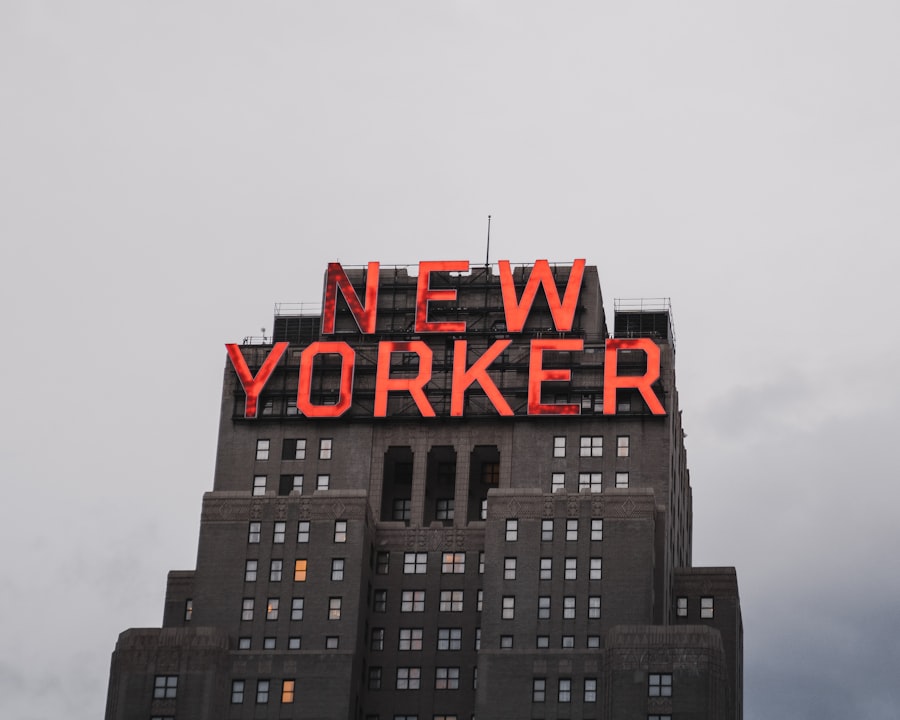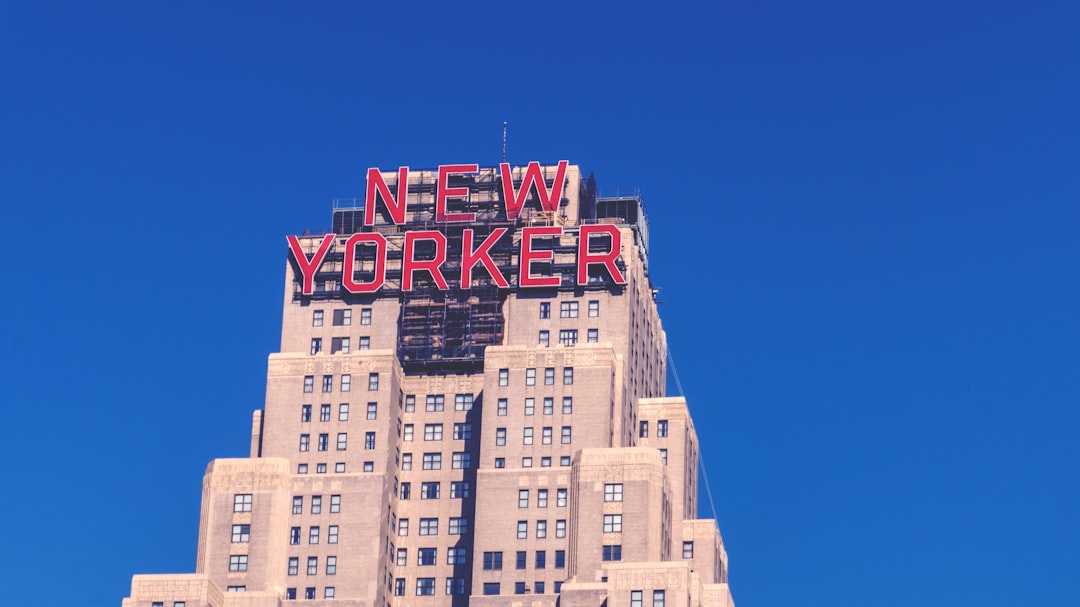New York City has long been a beacon of opportunity, attracting individuals from all walks of life. However, the rising cost of living has become a significant concern for many residents. Over the past decade, the prices of essential goods and services have surged, making it increasingly difficult for families to maintain their standard of living.
Rent, transportation, and groceries have all seen substantial increases, leading to a financial strain that many are struggling to manage. The allure of the city’s vibrant culture and career prospects is often overshadowed by the harsh reality of its economic demands.
They are faced with the challenge of balancing their aspirations with the harsh economic realities that come with living in one of the most expensive cities in the world. The financial burden is not just a matter of budgeting; it affects their quality of life, mental health, and overall well-being. The dream of thriving in New York City is increasingly becoming a source of stress rather than fulfillment for many.
Key Takeaways
- The cost of living in New York City is rising, making it difficult for middle class families to afford basic necessities.
- Finding affordable housing in the city is a major challenge, with limited options and high demand driving up prices.
- Gentrification is impacting middle class communities, leading to displacement and changes in neighborhood dynamics.
- High taxes and living expenses create a burden for middle class families, making it difficult to save for the future.
- Access to quality education is a concern for middle class families, who may struggle to afford private schools or live in areas with good public schools.
Challenges of Finding Affordable Housing in the City
Finding affordable housing in New York City has become a daunting task for many residents. The demand for housing far exceeds the supply, leading to fierce competition and skyrocketing prices. Middle-class families often find themselves priced out of neighborhoods they once considered home, forced to either compromise on their living conditions or relocate to less desirable areas.
This struggle is compounded by the fact that many landlords prefer tenants who can pay higher rents, leaving those with moderate incomes at a disadvantage. Moreover, the search for affordable housing is often fraught with additional challenges. The application process can be lengthy and complicated, requiring extensive documentation and financial proof that many families may not readily have.
Even when they do find a suitable place, the burden of high security deposits and broker fees can be overwhelming. As a result, many families are left feeling disheartened and frustrated, caught in a cycle of searching for a place they can afford while grappling with the reality that their options are limited.
The Impact of Gentrification on Middle Class Communities

Gentrification has transformed many neighborhoods in New York City, often displacing long-time residents and altering the cultural fabric of communities. While some view gentrification as a sign of progress and revitalization, it has profound implications for middle-class families who find themselves squeezed out by rising rents and changing demographics. As new businesses cater to wealthier clientele, local shops that once served the community may close, further eroding the sense of belonging for those who have lived there for years.
The impact of gentrification extends beyond just housing; it affects social dynamics and community cohesion. Long-standing residents may feel alienated in their own neighborhoods as new developments reshape their surroundings. This shift can lead to a loss of cultural identity and community ties, leaving many feeling disconnected from the very places they once called home.
For middle-class families, navigating this changing landscape becomes an emotional challenge as they grapple with the loss of familiar spaces and relationships.
The Burden of High Taxes and Living Expenses
| Country | Income Tax Rate | Cost of Living Index |
|---|---|---|
| United States | 22% | 100 |
| Canada | 26% | 125 |
| United Kingdom | 20% | 120 |
In addition to soaring housing costs, New York City residents face a heavy tax burden that compounds their financial struggles. The city’s high income tax rates, combined with property taxes and sales taxes, can take a significant toll on middle-class families trying to make ends meet. Many find themselves working longer hours or taking on additional jobs just to cover their basic expenses, leaving little room for savings or leisure activities.
The high cost of living is not limited to housing; everyday expenses such as transportation, childcare, and healthcare also contribute to the financial strain. Commuting costs can add up quickly, especially for those who rely on public transportation to navigate the city. Childcare expenses are another significant burden, often consuming a large portion of a family’s budget.
As these costs continue to rise, middle-class families are left feeling increasingly squeezed, struggling to balance their financial obligations with their desire for a fulfilling life in the city.
Access to Quality Education for Middle Class Families
Access to quality education is a critical concern for middle-class families in New York City. With public schools often underfunded and overcrowded, parents frequently seek alternatives such as private schools or charter schools, which can be prohibitively expensive. The competition for spots in reputable schools is fierce, leading many families to invest significant time and resources into securing a quality education for their children.
This educational landscape creates an additional layer of stress for middle-class families who may already be stretched thin financially. The pressure to provide their children with the best possible education can lead to feelings of inadequacy and anxiety. Many parents worry about their ability to afford tuition or extracurricular activities that could enhance their children’s educational experience.
As they navigate these challenges, they must also contend with the reality that access to quality education is often tied to socioeconomic status, further perpetuating cycles of inequality.
Balancing Work and Family Life in a High-Stress Environment

In a city known for its fast-paced lifestyle, balancing work and family life can be particularly challenging for middle-class families. The demands of high-pressure jobs often leave little room for personal time or family bonding. Many parents find themselves working long hours or bringing work home, which can strain relationships and lead to feelings of guilt about not being present for their children.
The struggle to maintain a healthy work-life balance is exacerbated by the high cost of living in New York City.
This relentless pursuit of success can lead to burnout and emotional exhaustion, leaving parents feeling overwhelmed and disconnected from their families.
As they navigate this high-stress environment, many middle-class families grapple with the desire for professional achievement while yearning for meaningful connections at home.
The Pressure of Keeping up with Social and Economic Expectations
Living in New York City comes with its own set of social and economic expectations that can weigh heavily on middle-class families. The city’s culture often emphasizes success, wealth, and status, creating an environment where individuals feel compelled to keep up with their peers. This pressure can manifest in various ways, from spending on luxury items to participating in exclusive social events that may be financially out of reach.
As families strive to meet these expectations, they may find themselves sacrificing their financial stability for the sake of appearances. The desire to fit in can lead to overspending and accumulating debt, further complicating their financial situation. This cycle of comparison and competition can take an emotional toll, leaving many feeling inadequate or dissatisfied despite their accomplishments.
In a city where success is often measured by material wealth, middle-class families must navigate the fine line between aspiration and reality.
The Dilemma of Saving for the Future in an Expensive City
Saving for the future is a common goal for many families; however, in New York City’s expensive environment, this aspiration can feel nearly impossible for middle-class households. With high living expenses consuming much of their income, setting aside money for emergencies or retirement often takes a backseat to immediate financial needs. Many families find themselves living paycheck to paycheck, unable to build a safety net that could provide security in times of crisis.
The dilemma of saving is further complicated by the rising costs associated with raising children in the city. From education expenses to extracurricular activities, parents often prioritize immediate needs over long-term savings goals. This short-sighted approach can lead to anxiety about future financial stability as families grapple with the reality that they may not be adequately prepared for unexpected challenges down the road.
Coping with the Emotional and Mental Strain of Financial Struggles
The emotional and mental strain associated with financial struggles can be profound for middle-class families in New York City. Constantly worrying about making ends meet can lead to heightened stress levels and anxiety, impacting overall well-being. Many individuals find themselves caught in a cycle of negative thoughts as they grapple with feelings of inadequacy or fear about their financial future.
Coping mechanisms vary widely among families facing these challenges. Some may turn to support networks or community resources for assistance, while others may internalize their struggles out of fear or shame. The stigma surrounding financial difficulties can prevent individuals from seeking help or discussing their challenges openly, leading to feelings of isolation.
As they navigate these emotional hurdles, middle-class families must find ways to prioritize their mental health while managing their financial realities.
The Lack of Support Systems for Middle Class Individuals and Families
Despite being a vibrant metropolis filled with resources, New York City often lacks adequate support systems for middle-class individuals and families facing economic challenges. While there are numerous programs aimed at assisting low-income residents, those in the middle class frequently fall through the cracks when it comes to accessing support services. This gap leaves many feeling unsupported as they navigate their financial struggles alone.
The absence of tailored resources can exacerbate feelings of frustration and helplessness among middle-class families. They may find it difficult to access affordable childcare or mental health services that could alleviate some of their burdens. Without adequate support systems in place, these families are left to fend for themselves in an increasingly challenging environment, further complicating their efforts toward achieving economic stability.
The Fight for Economic Stability and Social Mobility in New York City
In conclusion, the fight for economic stability and social mobility remains an ongoing struggle for middle-class families in New York City. As they navigate rising costs, housing challenges, educational disparities, and societal pressures, these individuals must continually adapt to an ever-changing landscape that often feels unforgiving. Despite these obstacles, many remain resilient in their pursuit of a better life for themselves and their children.
The journey toward economic stability is fraught with challenges; however, it also presents opportunities for growth and community engagement. By advocating for policies that address housing affordability, education access, and support systems tailored to their needs, middle-class families can work toward creating a more equitable environment within the city they love. Ultimately, their collective efforts may pave the way for future generations to thrive amidst New York City’s complexities while fostering a sense of belonging and hope within its diverse communities.
The challenges faced by the middle class in New York have been a topic of significant discussion, particularly in light of the rising cost of living and housing. An insightful article that delves into these issues can be found on MyGeoQuest, which explores the economic pressures and lifestyle changes impacting this demographic. For a deeper understanding of how these factors are shaping the lives of New York’s middle class, you can read more in this related article.
WATCH THIS! The Real Cost of NYC Living: Your Wallet, Sanity, and Subway Survival Skills
FAQs
What is the definition of the middle class in New York?
The middle class in New York is generally defined as households with an income that falls within a certain range, typically between 67% and 200% of the median household income for the state.
What are the characteristics of the middle class in New York?
The middle class in New York is diverse and includes individuals and families who work in a wide range of professions and industries. They often own homes, have access to healthcare and education, and contribute to the local economy through their spending and tax contributions.
What are the challenges faced by the middle class in New York?
The middle class in New York faces challenges such as high cost of living, including housing, healthcare, and education expenses. They also may struggle with job security, retirement savings, and access to affordable childcare.
How does the cost of living in New York impact the middle class?
The cost of living in New York, particularly in areas like New York City, can be significantly higher than the national average. This can make it difficult for the middle class to afford housing, healthcare, and other essential expenses, leading to financial strain.
What policies or initiatives are in place to support the middle class in New York?
New York has implemented various policies and initiatives to support the middle class, including affordable housing programs, healthcare subsidies, and education assistance programs. Additionally, there are efforts to increase the minimum wage and provide tax relief for middle-class families.
